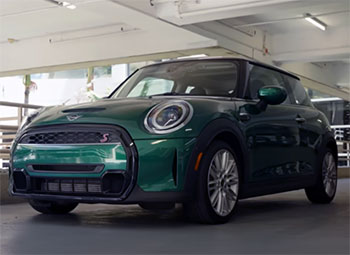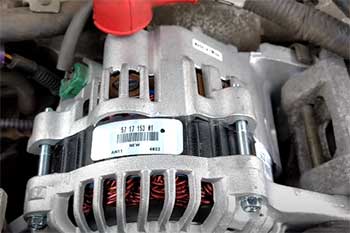As a car enthusiast who’s spent countless hours behind the wheel of compact hatchbacks, I’ve always been drawn to the charm of the Mini Cooper S and Fiat 500. These iconic subcompacts blend retro style with modern flair, but which one truly wins my heart?
In this article, I’ll explore their features, performance, and quirks from a personal perspective, weighing pros and cons to help you decide which car suits your lifestyle. With a detailed comparison table, real-world insights, and an FAQ, I’ll break down what makes these cars tick.
Comparison Table: Mini Cooper S Vs. Fiat 500
| Feature | Mini Cooper S | Fiat 500 |
|---|---|---|
| Base Price | £24,100 | £17,990 |
| Engine | 2.0L Turbo 4-cylinder, 189 hp | 1.4L Turbo 4-cylinder, 135 hp |
| Fuel Economy | 34 MPG combined | 30 MPG combined |
| Cargo Space | 211 liters (278 liters for 5-door) | 185 liters |
| 0-60 MPH | 6.7 seconds | 8.5 seconds |
| Interior Quality | Premium leather, soft-touch materials | Classic design, some hard plastics |
| Safety Rating | 5-star Euro NCAP | 4-star Euro NCAP |
| Transmission | 6-speed manual/automatic | 5-speed manual/6-speed automatic |
| Infotainment | 8.8-inch touchscreen, Apple CarPlay | 7-inch touchscreen, Apple CarPlay |
My Experience With Mini Cooper S

Sliding into the Mini Cooper S feels like stepping into a cockpit designed for fun.
The first time I drove one, I was struck by its go-kart-like handling—sharp, responsive, and glued to the road.
On a winding country road, the 2.0-liter turbo engine roared to life, delivering 189 horsepower that made every twist feel exhilarating.
The cabin’s premium vibe, with leather seats and a sleek infotainment system, screamed quality. I loved tweaking the ambient lighting to match my mood, a quirky touch that added personality.
But it’s not all rosy. The firm suspension jolted me on rough city streets, and the back seat? Forget about it unless your passengers are kids or contortionists. Parking in tight urban spots was a breeze, but the higher price tag—starting around £24,100—made me wince compared to more affordable rivals.
Maintenance costs also stung, as Mini’s BMW roots mean pricier parts and service. Still, zipping through city traffic or carving up a backroad, the Cooper S felt like an extension of my driving spirit, blending style and performance in a way few cars can match.
I took a 2023 model for a weekend trip, and its fuel economy hovered around 34 MPG combined, decent for a sporty hatch. The 6-speed manual was a joy, though the automatic’s paddle shifters added convenience in traffic.
The infotainment system, with its 8.8-inch touchscreen, was intuitive, but I occasionally fumbled with the circular controller. Safety features like forward collision warning gave me peace of mind, especially in hectic urban settings. Overall, the Mini Cooper S is a driver’s car, built for those who crave excitement over practicality.
Pros Of Mini Cooper S
- Thrilling Performance: The 2.0-liter turbo engine delivers 189 horsepower, making it quick off the line with a 0-60 MPH time of 6.7 seconds, perfect for spirited drives.
- Premium Interior: Leather upholstery, soft-touch materials, and customizable ambient lighting create a luxurious, high-end cabin that feels like a mini BMW.
- Agile Handling: Go-kart-like steering and a tight turning radius make it a blast on twisty roads and easy to maneuver in city parking.
- Advanced Tech: An 8.8-inch touchscreen with Apple CarPlay, Bluetooth, and optional driver aids like adaptive cruise control keep it modern and connected.
- Safety Edge: A 5-star Euro NCAP rating, with features like automatic emergency braking, ensures top-notch protection for urban and highway driving.
- Customization Options: From racing stripes to unique wheel designs, Mini offers endless ways to personalize your car, making it feel uniquely yours.
- Resale Value: Minis tend to hold their value better than many subcompacts, thanks to their iconic design and BMW backing.
The Mini Cooper S shines as a driver’s dream, blending power and precision. Its interior feels like a step above the competition, with details like toggle switches adding charm. The tech suite is robust, and safety ratings reassure. However, the high customization costs can inflate the price, and you’ll feel every bump on rough roads. Still, for those who prioritize fun and style, it’s hard to beat.
Read More: My Thoughts On GMC Terrain Vs. Ford Escape
Cons Of Mini Cooper S
- Higher Price Point: Starting at £24,100, it’s pricier than competitors like the Fiat 500, and options can push the cost even higher.
- Firm Ride: The stiff suspension enhances handling but makes bumpy roads feel jarring, especially in urban environments.
- Limited Rear Space: The back seats are cramped, with minimal legroom and headroom, making it impractical for adult passengers.
- Expensive Maintenance: BMW-derived parts and service mean higher repair costs compared to more budget-friendly rivals.
- Small Boot: At 211 liters (278 for the 5-door), cargo space is limited, struggling with larger loads or extended trips.
- Fuel Economy: While decent at 34 MPG combined, it lags behind some competitors, especially electric or hybrid options.
- Complex Infotainment: The circular controller can be finicky, and some menus feel less intuitive than touchscreen-only systems.
The Mini’s premium feel comes at a cost—literally. Maintenance and initial pricing can strain budgets, and practicality takes a backseat to performance. If you need space or a smoother ride, you might hesitate. Yet, for enthusiasts, these trade-offs are often worth the thrill.
My Experience With Fiat 500

Driving the Fiat 500 feels like stepping into a time capsule with a modern twist. Its retro design—rounded headlights, compact silhouette—turned heads everywhere I went.
The 1.4-liter turbo engine in the Abarth model I tested punched out 135 horsepower, enough for zippy city drives but less thrilling on highways.
The cabin’s nostalgic vibe, with its circular speedometer and quirky controls, made me smile, though some plastics felt cheap. It’s a car that begs you to have fun, especially in tight urban spaces.
However, the Fiat 500 has its quirks. The upright seating position felt odd at first, and the 185-liter boot barely held my weekend bags. On a road trip, the 30 MPG combined fuel economy was acceptable, but the 5-speed manual transmission felt clunky compared to the Mini’s slick gearbox. The infotainment, with a 7-inch touchscreen, was user-friendly but lacked the polish of pricier rivals.
While the Fiat’s affordability—starting at £17,990—won me over, its 4-star Euro NCAP rating left me wanting more in safety. It’s a charming city car, but it sacrifices some refinement for its budget-friendly appeal.
Pros Of Fiat 500
- Affordable Price: Starting at £17,990, it’s significantly cheaper than the Mini Cooper S, offering great value for budget-conscious buyers.
- Retro Charm: The rounded design, vibrant colors, and nostalgic interior evoke a playful, classic vibe that stands out.
- Nimble Handling: Its compact size and tight turning radius make it a dream for city parking and weaving through traffic.
- Decent Tech: A 7-inch touchscreen with Apple CarPlay, Bluetooth, and USB ports keeps it connected and user-friendly.
- Fuel Efficiency: At 30 MPG combined, it’s solid for a petrol-powered subcompact, especially for urban commuters.
- Low Maintenance Costs: Fiat’s simpler mechanics and cheaper parts make repairs more affordable than Mini’s BMW-derived costs.
- Convertible Option: The 500C’s roll-top roof adds a fun, open-air experience, perfect for sunny days.
The Fiat 500’s affordability and charm are hard to resist. It’s a car that feels alive in the city, with enough tech to keep you connected. Maintenance won’t break the bank, and the convertible option adds flair. However, it lacks the Mini’s refinement and power, and space is tight.
Cons Of Fiat 500
- Underpowered Engine: The 1.4-liter turbo’s 135 horsepower feels sluggish on highways, with a 0-60 MPH time of 8.5 seconds.
- Cramped Interior: Limited rear legroom and headroom make it impractical for adult passengers or long trips.
- Small Boot: At 185 liters, the cargo space struggles with anything beyond small bags or groceries.
- Lower Safety Rating: A 4-star Euro NCAP rating is decent but trails the Mini’s 5-star score, with fewer driver aids.
- Cheap Materials: Hard plastics in the cabin detract from the premium feel, especially compared to the Mini.
- Clunky Transmission: The 5-speed manual feels less refined, and the automatic isn’t as smooth as competitors.
- Limited Highway Comfort: The Fiat’s soft suspension and engine noise make long drives less enjoyable.
The Fiat 500’s budget-friendly nature comes with compromises. It’s underpowered for open roads, and the interior feels less upscale. Safety and space limitations are noticeable, but for city dwellers, its charm often outweighs the flaws.
Comparison With Other Brands

- Honda Fit: Offers more cargo space (470 liters) and better fuel economy (36 MPG), but lacks the style and fun of the Mini or Fiat.
- Volkswagen Beetle: Matches the retro vibe with a 310-liter boot, but its higher price and dated tech can’t compete with the Mini’s performance.
- Ford Fiesta: Delivers sharp handling and a 311-liter boot, but its plain design doesn’t capture the Mini or Fiat’s charm.
- Toyota Yaris: Boasts excellent reliability and 35 MPG, but its dull driving dynamics pale against the Mini’s go-kart feel.
- Peugeot 208: Offers a sleek design and 311-liter boot, but its less engaging drive doesn’t match the Mini or Fiat’s personality.
- Kia Rio: Affordable with a 325-liter boot, but its bland styling and weaker performance lag behind both cars.
- Renault Clio: Matches the Fiat’s affordability and offers a 391-liter boot, but its handling isn’t as sharp as the Mini’s.
The Mini Cooper S and Fiat 500 stand out for their unique designs and driving fun, but competitors like the Honda Fit and Renault Clio offer more practicality. The Volkswagen Beetle shares the retro appeal but feels dated. The Ford Fiesta and Peugeot 208 are solid but lack the emotional pull of the Mini or Fiat. For style and personality, these two reign supreme, but if space or reliability is your priority, other options might edge them out.
Read More: My Thoughts On Acura MDX Vs. Jeep Grand Cherokee
Frequently Asked Questions (FAQ)
Both have similar reliability ratings, but Fiats generally have lower maintenance costs due to simpler mechanics. Minis, with BMW parts, can be pricier to repair.
No, the Mini Cooper is larger, with more legroom and a 211-liter boot compared to the Fiat 500’s 185 liters.
Yes, the Fiat 500 is smaller, measuring 7 inches shorter and 2.2 inches narrower, making it ideal for tight city spaces.
Mini’s higher insurance costs stem from its premium brand status, BMW-derived parts, and sporty performance, which increase repair costs and risk profiles.
Conclusion
You’re now armed with the full picture of the Mini Cooper S and Fiat 500. If you crave thrilling performance, premium interiors, and iconic style, the Mini Cooper S is your ride, though it demands a bigger budget and sacrifices some practicality. If affordability and quirky charm are your vibe, the Fiat 500 delivers, but don’t expect highway prowess or spaciousness. Your choice depends on whether you prioritize fun or frugality—both cars will put a smile on your face, but in different ways.

